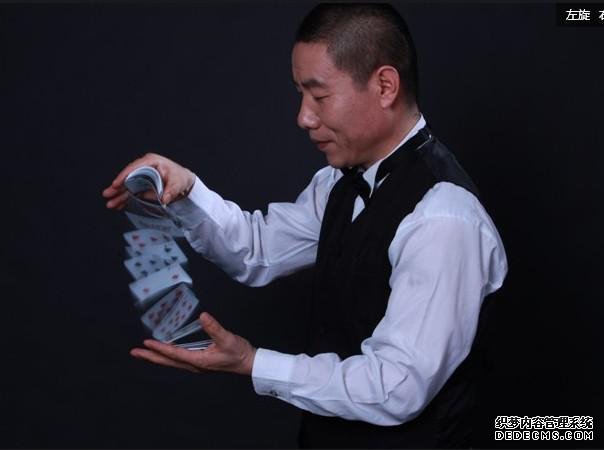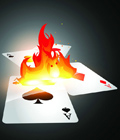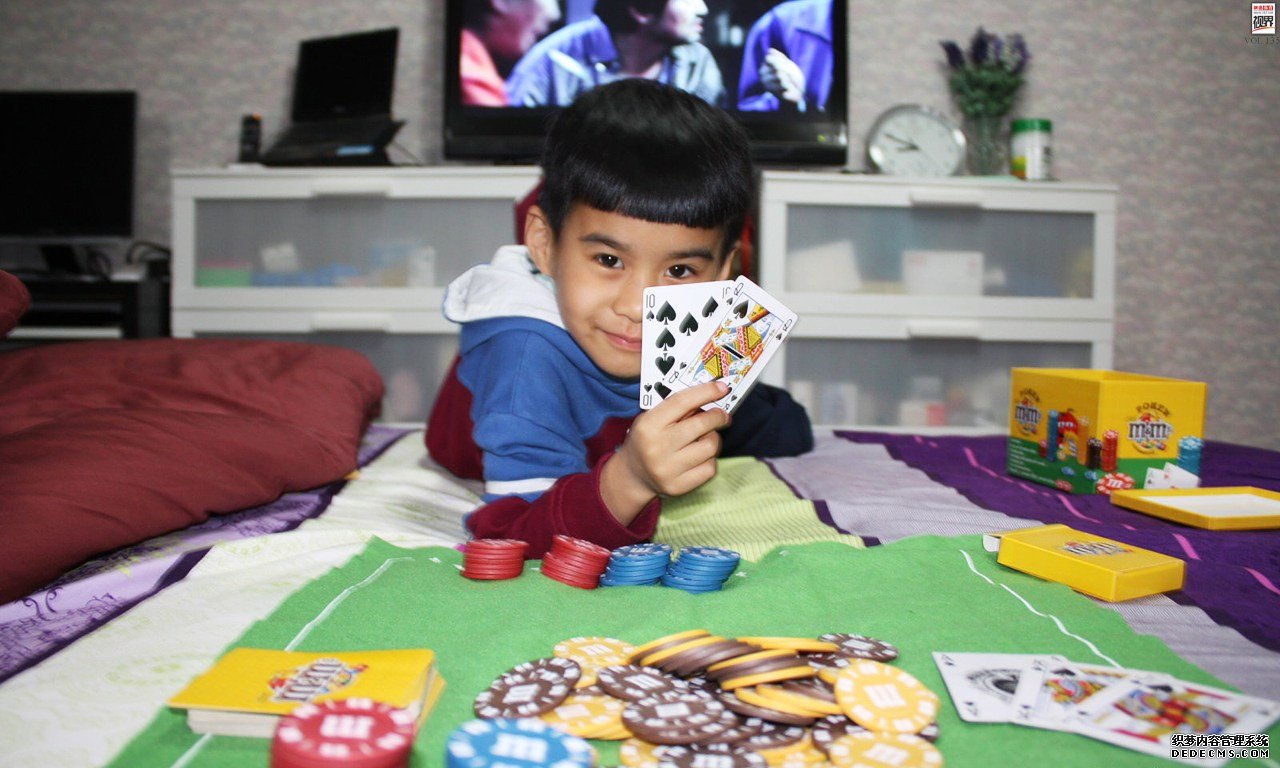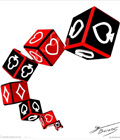游戏之王百家乐取胜技巧
百家乐在澳门及亚洲各地的赌场中可以称得上是游戏之王,但是唯有最终赢得了重大的百家乐比赛才真正称得上是王中之王。这样一个大型比赛中的数百万美元的一等奖奖金,足以改变你的生活。围绕着几个问题,环球博彩会让我们的赌场战略大师安德·鲁斯科特为你在大型百家乐比赛中出谋划策!
当您在一个正规的百家乐赌场,你要考虑庄家或玩家是否会下相应的赌注。你想赢得现金,就要赢得百家乐比赛。具有讽刺意味的是,你不一定必须赢得筹码或增加你的赌注,你只要相对于其他玩家来说赢得更多(或失去少)即可。
赢得百家乐比赛要进行资金方面的管理。你需要知道你总共有多少资金,而他们又已经得到了多少资金,并在此基础上进行投注,这会让你比其他玩家有更大的机会赢得更多的筹码。事实上,你不必关心你是否有很多的筹码,在比赛中这不是关键所在。
在我们进入实际战略时,让我们来看看一些比赛玩家需要知道的一般技巧。
1、投注顺序非常重要。这不同于常规的现金游戏百家乐,玩家的投注是至关重要的。如果你可以看到你的对手下注在哪一方(庄家或玩家),或他有多少赌注,在为您提供了重要信息后再下注。比方说,你有100,000筹码和一个关键的对手,你试图留住前面的90,000筹码。现在你看到你的对手押20000筹码。您可以在那个20000筹码的基础上投注更多!这种方法被称为“流动的”玩家。居于这种现象,玩家投注时需要严格按照顺序,就像打扑克时那样。所不同的是,围绕百家乐赌桌移动的是按照反时针方向,而打扑克时是按照顺时针移动。
2、了解“投注”标记。因为投注的顺序很重要,所以百家乐比赛会使用“投注”标记。这有点像在扑克游戏中的按钮,但在这里只用来表示第一个人投注玩家,而不是最后的赌注。就像扑克,标记会移动到下一个玩家,使每个玩家能够按顺序获得公平的投注机会。一旦标记,它就会以赌桌作为一个“圈”或“轨道”移动。有一些比赛还有一个规则,就是在“投注”标记停止后,轮到的玩家要将其缚在手上。
3、最后将赌注押在和局上。对于赌场投注来说,和局有非常高的赌场优势。和局出现的概率虽然只有9.5%,但赢钱是原来的8倍。对于玩家来说,几乎完全避开在和局上的投注是最好的做法,但是具有讽刺意味的是,几乎所有的关于最后的投注战略都会与和局相关,这是一个非常重要的赌注,因为这是你最后的机会,赌场优势不再是考虑的重要因素,相反,锁定最高的机会击败你的对手成为了首要目标。现在开始只需记住:直到最后的一招,否则永远不要在平局上押注,而在投注整个过程中你在和局上的投注将会是最大的。
译文
How to Win a Baccarat Tournament
Baccarat is the king of casino games in Macau and across Asia, but the ultimate in big scores and bragging rights comes from winning a major baccarat tournament. It can be a life-changing experience as first prize of a big tournament can be millions of dollars. Over the next few issues of World Gaming our casino strategy guru Andrew Scott shows you how to take that big baccarat tournament down!
When you play normal baccarat in a casino, you're trying to pick whether banker or player will come up, and bet accordingly. You're trying to win cold hard cash. The ironic thing about winning a baccarat tournament is that you don't necessarily have to win chips and increase your stack; you just have to do better than the other players - by winning more (or losing less) than your opponents.
Winning a baccarat tournament is all about money management. You need to know how much you've got, how much they've got, and make bets that give you the biggest chance of finishing up with more chips than the other players. You actually don't care whether you have a lot of chips or hardly any chips; the key thing here is the difference between your stack and their stacks.
Before we get into actual hand-by-hand strategies, let's look at some of the general concepts that all tournament specialists need to know.
Betting order is very important. Unlike normal cash-game baccarat, the order players bet in is crucial. If you can see on which side (banker or player) your opponent has bet, or how much he has bet, or more usually both, that gives you vital information upon which to base your bet. Let's say you have 100,000 in chips and a key opponent you are trying to stay in front of has 90,000 in chips. Now you see your opponent bet 20,000 chips on player. You can just bet 20,000 on player too! This is known as 'flowing' a player. Now it doesn't matter whether banker, player or tie comes up, you will still finish the hand 10,000 chips in front of your opponent. Because of this phenomenon, players are required to bet in strict order, just like when playing poker. The difference is that play moves around a baccarat table anti-clockwise whereas poker play moves clockwise.
Understand the 'first bet' marker. Because betting order is important, baccarat tournaments make use of a 'first bet' marker. This is a bit like a dealer button in poker, but indicates the first person to bet instead of the last. Just like in poker, the marker moves on to the next player after every hand (but anti-clockwise instead of clockwise), so that every player gets his fair share of the different positions in the betting order. Once the marker has made it all the way around the table once that is known as a 'lap' or an 'orbit'. Very occasionally tournaments will have a rule that the 'first bet' marker does not move on after a tied hand. This doesn't make much difference as ties only occur on about 10 percent of the hands.
You have a big edge over those on your left. We've just seen that when you bet after a player, you have a big advantage over him. Conversely, when he bets after you, he has a big advantage over you. Players on your left usually bet before you and players on your right usually bet after you (depending on the precise position of the 'first bet' marker)。 So you have an edge over those on your left and those on your right have an edge over you. The closer the player, the bigger the edge. Worry more about opponents on your right, and less about those on your left. Being behind a player on your immediate right by a certain number of chips is a substantially bigger problem than being behind a player on your immediate left by the same amount of chips, especially if the opponent on your right knows how to use his position effectively.
Only bet the tie on the last hand. The tie is a very high house advantage bet. Ties occur on only 9.5 percent of the hands yet the bet pays just 8 to 1. This gives the house a 14.5 percent edge on the bet and if you turnover too much on it you'll soon find your bankroll dwindling. It's best to almost totally avoid betting on the tie, however ironically almost all final hand strategies involve a crucially important bet on the tie. This is because by the time you get to the last hand, compounding house edge is no longer a major consideration. Instead, locking up the highest chance of beating your opponent becomes the primary goal. There will be more to say on this later but for now just remember: never bet on the tie until the last hand, where you will almost always be betting the maximum bet on the tie.
相关推荐
随机专题



 您现在的位置:
您现在的位置: 
 从押大小规则分析押大小游戏中的概率问题
从押大小规则分析押大小游戏中的概率问题 百家乐小路怎么看
百家乐小路怎么看 百家乐下注的管理方式!
百家乐下注的管理方式! 打牛牛技巧
打牛牛技巧


